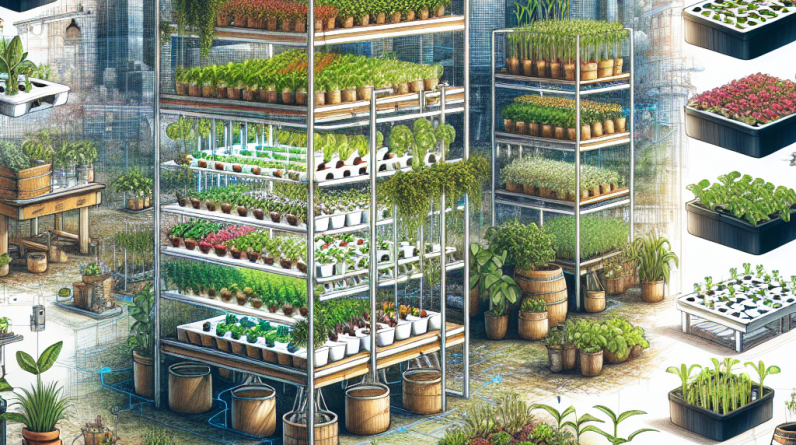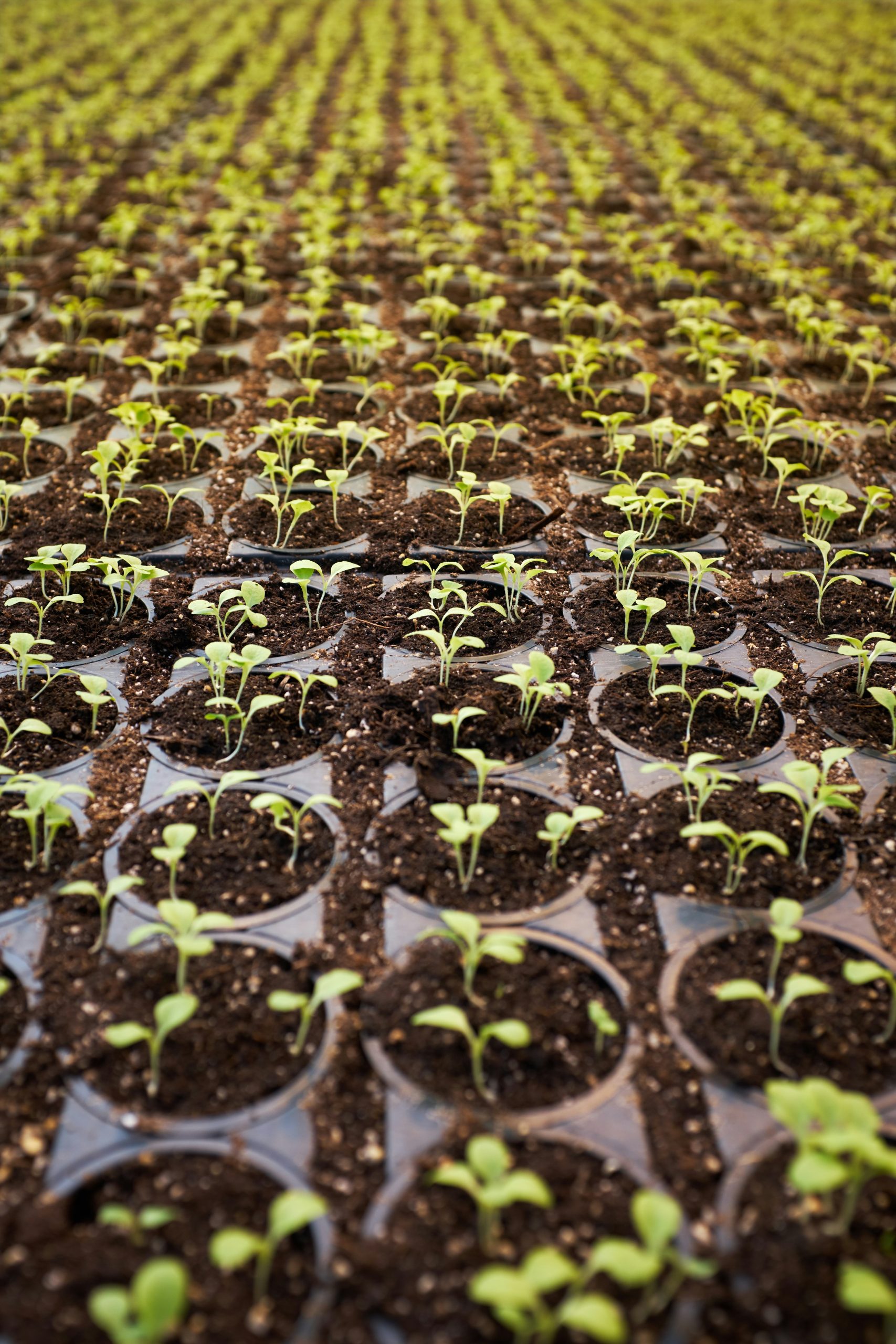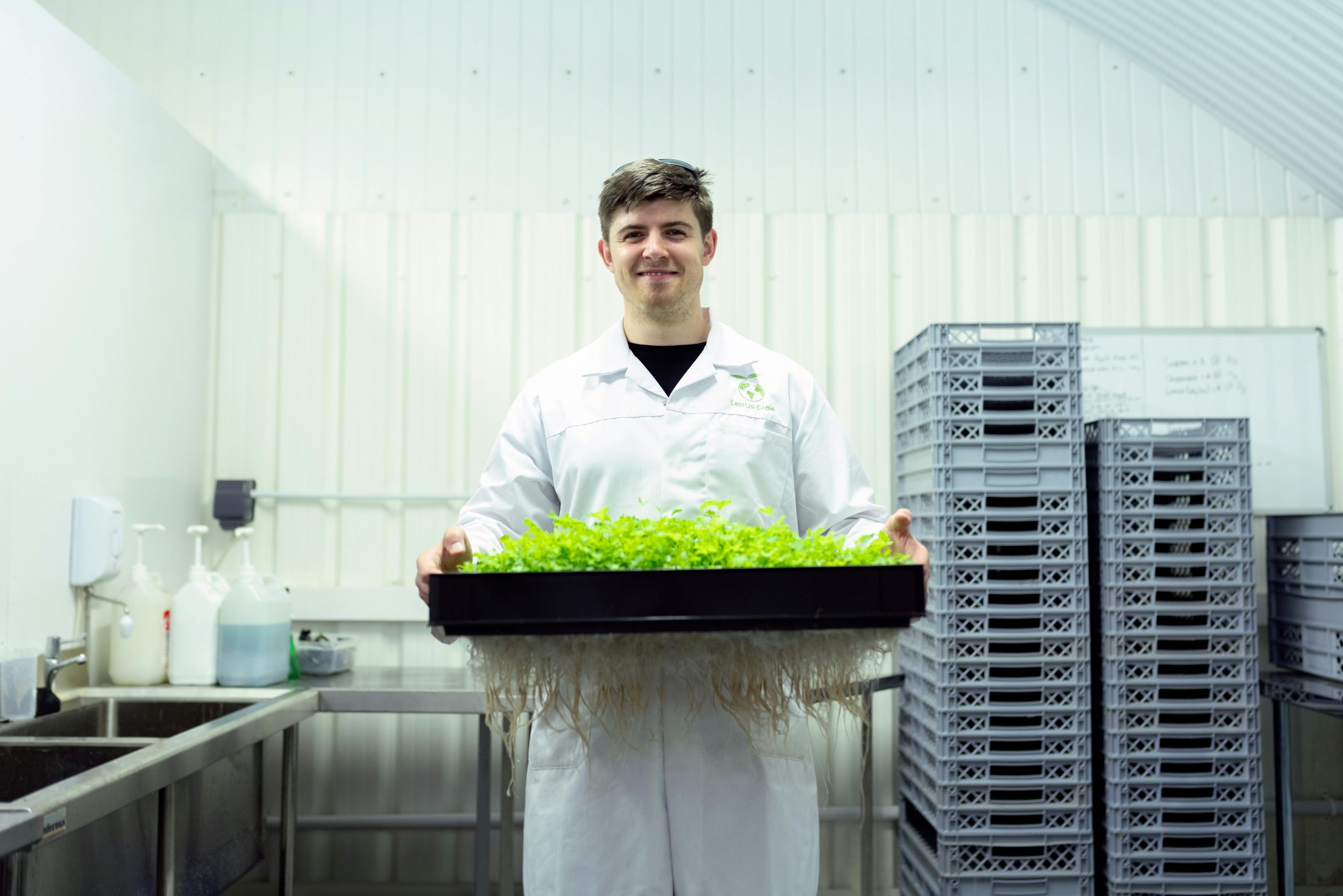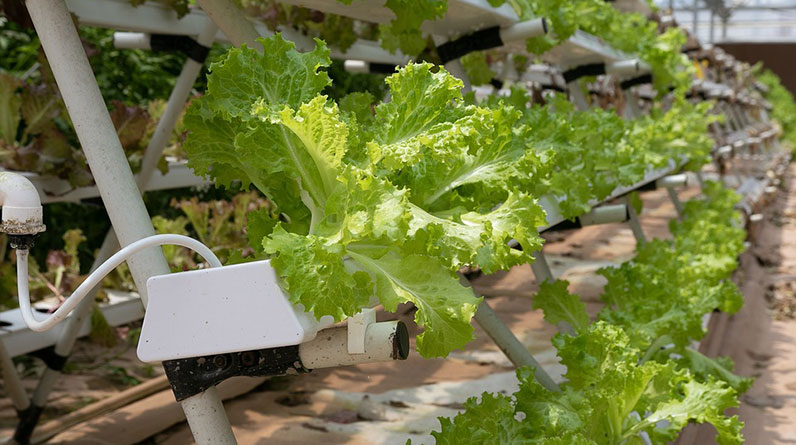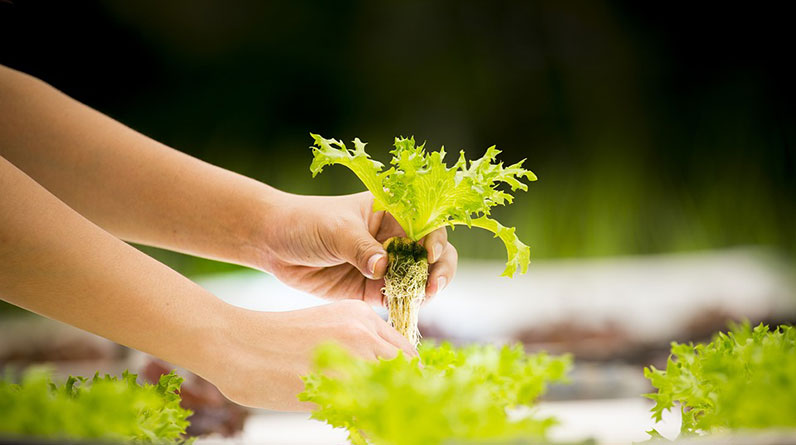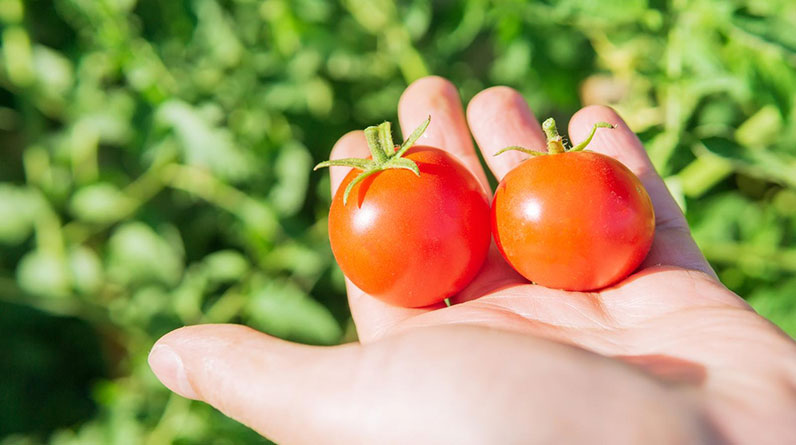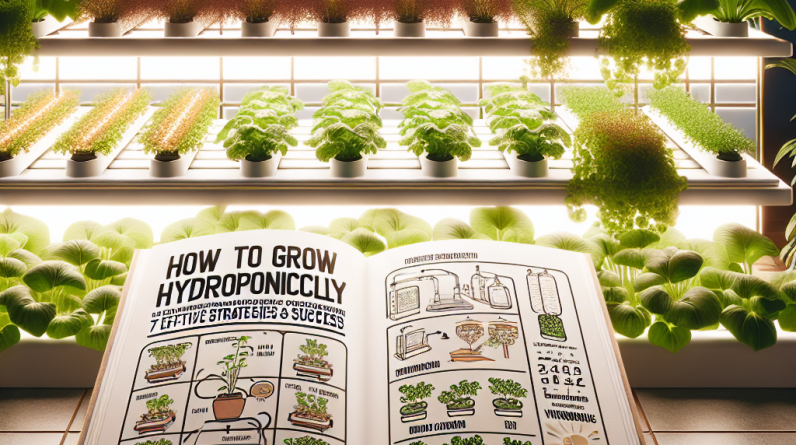
- 1. Choose the Right Hydroponic System
- 2. Select Optimal Nutrients and pH Levels
- 3. Master Light and Environmental Controls
- 4. Maintain Precise Water Management
- 5. Regular Monitoring and Disease Prevention
- 6. Incorporate Automation and Technology
- 7. Continuous Learning and Adaptation
1. Choose the Right Hydroponic System
Understanding Different Hydroponic Setups
To learn how to grow hydroponically successfully, starting with the right system is crucial. There are several types of hydroponic setups, including nutrient film technique (NFT), deep water culture (DWC), drip systems, and aeroponics. Each system offers unique advantages depending on the crop type and available space. For example, NFT is ideal for leafy greens, while DWC provides stability and is favored for larger plants like tomatoes.
When selecting a hydroponic system, consider factors like ease of maintenance, initial setup costs, and scalability. If you’re new to hydroponics, starting with a simple system like DWC can help you grasp the basics of water and nutrient delivery before advancing to more complex setups.
Research and experimentation are key. Many indoor farmers are now experimenting with hybrid systems to optimize yields and resource efficiency. In 2025, innovations like modular hydroponic units and smart systems are making it even easier to understand how to grow hydroponically with minimal hassle.
Practical Tips for System Selection
- Assess your space and choose a system that fits your available area.
- Start with a beginner-friendly setup like deep water culture or wick systems.
- Consider future expansion possibilities to scale your hydroponic farm easily.
2. Select Optimal Nutrients and pH Levels
Understanding Hydroponic Nutrients
One of the most significant aspects of how to grow hydroponically is providing plants with the right nutrients. Unlike soil, hydroponic systems rely solely on nutrient solutions. Essential macronutrients include nitrogen, phosphorus, and potassium, while micronutrients like iron, magnesium, and calcium are equally important.
Optimal nutrient formulation varies by crop, but in 2025, tailor-made nutrient mixes and pH-balanced solutions are the standard. Utilizing high-quality, commercially available hydroponic nutrients simplifies the process and improves yield quality.
Regular testing and adjustments are necessary. Do keep in mind that nutrient imbalances can lead to deficiencies or toxicities, which is why maintaining proper nutrient concentrations is vital for a successful hydroponic venture.
Maintaining the Ideal pH Range
- The optimal pH for most hydroponic crops is between 5.5 and 6.5.
- In 2025, automated pH monitoring systems have become common, allowing real-time adjustments.
- Monitoring pH daily can prevent nutrient lockout and ensure consistent plant growth.
3. Master Light and Environmental Controls
Lighting Techniques for Hydroponic Growth
Proper lighting is essential in hydroponics, especially in indoor environments. In 2025, LED grow lights with adjustable spectra have revolutionized how growers provide plants with ideal light conditions. These lights allow customization based on plant growth stages, maximizing photosynthesis and accelerating development.
For optimal growth, aim for 14-18 hours of light per day during vegetative stages and 12 hours during flowering. Keep in mind that light intensity and spectrum significantly influence plant health and yield.
Adjusting lighting setups based on the specific crop requirements can dramatically improve your hydroponic success rate, making it a key aspect of how to grow hydroponically.
Controlling Temperature and Humidity
- The ideal temperature range for most hydroponic plants is 65-75°F (18-24°C).
- Humidity levels around 50-70% promote healthy transpiration and prevent diseases.
- Using fans, heaters, and dehumidifiers results in a stable environment, leading to higher yields.
4. Maintain Precise Water Management
Water Quality and Circulation
Getting how to grow hydroponically right involves meticulous water management. Filtered, pathogen-free water prevents disease and promotes healthy roots. In 2025, sensor technology allows automatic monitoring of water quality, including dissolved oxygen levels and temperature, ensuring optimal conditions.
Consistent water circulation prevents stagnation, oxygenates the roots, and promotes nutrient uptake. Aeration systems are a common addition that enhances oxygen levels significantly.
Casual neglect of water quality can lead to root rot or nutrient deficiencies, so proactive maintenance is essential for a thriving hydroponic system.
Water Recycling and Conservation
- Implementing recirculating systems reduces water waste and operational costs.
- In 2025, smart pumps and sensors optimize water use, making hydroponics more sustainable.
- Regularly check for leaks and monitor water pH and electrical conductivity to maintain system health.
5. Regular Monitoring and Disease Prevention
Automating System Checks
One of the best ways to succeed in hydroponic cultivation is through diligent monitoring. In 2025, integrated control systems with IoT capabilities enable real-time data tracking on nutrients, pH, temperature, and humidity.
This automation not only prevents costly errors but also saves time, allowing you to focus on optimizing growth conditions. Use alerts and notifications to quickly address any abnormalities.
Keeping a growth diary and inspecting plants regularly help identify early signs of pests or diseases, essential in preventing widespread problems.
Proactive Disease and Pest Control
- Implement integrated pest management (IPM) strategies to minimize pesticide use.
- Maintain cleanliness and sterilize equipment regularly.
- Introduce beneficial insects or biological controls available in 2025 to manage pests naturally.
6. Incorporate Automation and Technology
Smart Systems for Improved Efficiency
Automation is transforming how how to grow hydroponically in 2025. Automated nutrient dosing, environmental controls, and lighting systems ensure consistent conditions, reducing human error and labor costs.
Smart platforms enable remote monitoring and adjustments via smartphones or computers, giving growers flexibility and peace of mind. For large-scale operations, integrating robotics can further streamline harvesting and maintenance tasks.
Leveraging this technology not only improves productivity but also maximizes resource use, making hydroponic farming more sustainable and profitable.
Data-Driven Optimization
- Collecting data over time helps refine growth parameters for specific crops.
- Utilize analytics tools to predict issues before they become severe.
- Adjust environmental variables based on plant growth stages for optimal results.
7. Continuous Learning and Adaptation
Staying Up-to-Date with Hydroponics Trends
The field of hydroponics is constantly evolving. In 2025, new techniques, crop varieties, and technology emerge regularly. Successful growers prioritize ongoing education through webinars, forums, and workshops.
Experimenting with different methods and sharing experiences with the community fosters innovation and resilience. Follow industry leaders and research institutions to stay ahead of trends.
Adapting to climate changes and market demands ensures your hydroponic farm remains productive and profitable.
Implementing New Strategies
- Test different nutrient formulations and planting schedules.
- Refine environmental controls based on crop response and data insights.
- Invest in scalable and sustainable practices aligned with 2025 best practices.
Conclusion
Knowing how to grow hydroponically is key to achieving success in 2025’s competitive and innovative agricultural landscape. Whether you are a hobbyist or a commercial grower, implementing these seven strategies can elevate your hydroponic farming to new heights. From system selection and nutrient management to leveraging automation and continuous learning, each step contributes to healthier plants, higher yields, and more sustainable practices. Stay informed, adapt wisely, and enjoy the rewarding journey of hydroponic cultivation in 2025!
Frequently Asked Questions
1. What is the best hydroponic system for beginners?
Deep water culture (DWC) and wick systems are among the easiest and most affordable options for beginners. They require minimal technical knowledge and are easy to set up and maintain.
2. How often should I check pH levels in my hydroponic system?
Daily monitoring is recommended, especially during the initial setup. Automated pH controllers can simplify this process and ensure optimal nutrient availability.
3. Can I grow any crop hydroponically?
Most common vegetables and herbs can be grown hydroponically, but some crops require specific conditions. Research your target plantsâ requirements before starting.
4. How to grow hydroponically in limited space?
Vertical farming and compact systems maximize space usage. LED lighting and automation improve productivity in small or indoor environments.
5. Why is nutrient management crucial in hydroponics?
Proper nutrient management prevents deficiencies and toxicities, promoting healthy, high-yield plant growth. It is one of the fundamental skills in mastering how to grow hydroponically.
Related Content
- The Ultimate Guide to the 10 Best Hydroponic Crops in 2025 for Maximum Yield
- 10 Effective Hydroponics Growing System Strategies for 2025 Success
- Exploring the Versatility of Hydroponic Crops
- The Therapeutic Benefits of Hydroponic Gardening
- The Ultimate Guide to 2025s Best Vertical Hydroponic Garden Strategies



